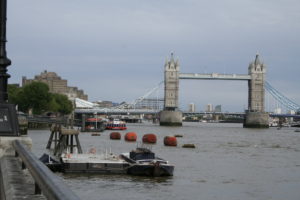Airport Apps

Sometimes having the right app makes your trip go easier. Have you ever used any of these?
Mobile Passport: I have not used this, but here is what the U.S. Customs and Border Protection have to say.
SAN DIEGO – U.S. Customs and Border Protection and San Diego International Airport today announced the expansion of Mobile Passport Control to SAN. Mobile Passport is the first authorized app to expedite a traveler’s arrival into the United States. Eligible travelers may voluntarily submit their passport information and answers to inspection-related questions to CBP via a smartphone or tablet app prior to arrival. Android and iPhone users can download the Mobile Passport app for free from the Google Play Store and Apple App Store.
“We continually strive to identify and implement new, more efficient ways of meeting the challenges posed by an increasingly complex mission and growing volumes in travel and trade,” said Pete Flores, director of field operations for CBP in San Diego. “We now have Automated Passport Control kiosks, Global Entry kiosks for our trusted travelers, and the use of smart-phone and mobile technologies to enhance the traveler experience.”
“We’re excited to launch this new program in San Diego just in time for the busy summer travel season,” said Kimberly Becker, President/CEO of San Diego International Airport. “Getting through the Customs process has never been so convenient, which allows more time to enjoy everything San Diego has to offer.”
MPC currently offers U.S. citizens and Canadian visitors a more efficient in-person inspection between the CBP officer and the traveler upon arrival in the United States. Much like Automated Passport Control, the app does not require pre-approval and is free to use. Travelers who successfully use the app will no longer have to complete a paper form or use an APC kiosk. As a result, travelers will experience shorter wait times, less congestion and faster processing.
There are five easy steps to MPC:
- Download the Mobile Passport App from the Apple App Store or Google Play Store prior to arriving
- Create a profile with your passport information
- Complete the “New Trip” section upon arrival in the United States
- Submit responses to inspection-related questions to CBP through the app to receive an electronic receipt with an Encrypted Quick Response (QR) code
- Bring your passport and smartphone or tablet with your digital bar-coded receipt to a CBP officer
Eligible travelers arriving at San Diego International Airport can begin using the app on June 1 for CBP processing. The MPC pilot launched in August 2014 for eligible travelers arriving at Hartsfield-Jackson Atlanta International Airport and has since expanded to 23 airports. For more information on what airports have MPC available please visit, CBP.gov/MPC.

Hotel Tonight: This app provides a shortcut to hotels near your airport. It shows available rooms, in case your flight is delayed or you need a last minute hotel.
My TSA: The MyTSA app provides airline passengers with 24/7 access to the most frequently requested airport security information on any mobile device. Save time and money with our helpful tips for preparing for security, including a searchable database of items that can and can’t go in checked or carry-on bags. With this app you can:
- Check how busy the airport will be on your specific day and time of travel based on historical data.
- Check the delay information and current weather conditions at your favorite airports nationwide.
- Quickly search which items you can bring with you through the checkpoint onto the airplane.
- Consult the TSA Guide on how to prepare for and get through the security checkpoint quickly.
- Discover which airports and airlines support TSA Pre✓®, and learn how to sign-up.
- Request live assistance from TSA through the AskTSA social media integration.

Google Translate: I use this for more than just at the airport. But, it’s handy to have if you need to find the right gate and you can’t remember your Italian.
TripIt and TripCase: These are travel itinerary apps that contain almost all details of a trip, including flight, car rental, lodging, and other details. The air travel information includes flight times, flight and booking numbers, seat assignments, terminal and gate information, and more.
I like to have all my information in one place, so this works well for me. You can set up notifications on your phone. Then 24 hours before your flight, the app will prompt you to check in online.
Gate Guru: This app helps when you need to get through the terminal efficiently. I feel it’s fairly up-to-date and useful in most airports. I’ve also noticed the security wait times tend to be a little off…sometimes longer, sometimes shorter.
Your Airline App: It’s always a good idea to have your airline app. It’s a quick way to see what’s going on with flight information, seat assignments, etc.
To my knowledge, these are available for both Android and IOS systems.














